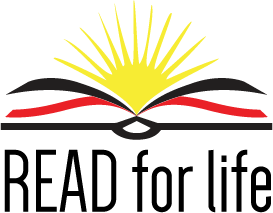Why We Do What We Do...Part 2
Written by: Abby Bluth
Click on the image to see in more detail
We developed this “problem tree” last term as a way to advocate for getting quality, systematic phonics instruction into the Ugandan curriculum. The “problem” is that many Ugandan children cannot read; the roots of the tree represent some of the factors that contribute to this problem; the branches bear the unwanted “fruit”, or the personal and societal effects that come from illiteracy.
This week, I want to delve a little deeper into what drives the work that we do at READ for Life: the roots of why children cannot read.
As with many issues that we see in education development, illiteracy and teachers’ lack of good literacy methodology is cyclical and very interconnected.
Children cannot read because there is not support for reading, or a reading culture, outside of school.
Literacy and language development happens before a child even starts school, and continues outside of school hours.
“Acquisition of literacy is best conceptualized as a developmental continuum, with its origins early in the life of a child, rather than an all-or-none phenomenon that begins when children start school. How parents expose their children to literacy even before they enter school is important for the later development of reading.” (C. Carroll, http://dc.uwm.edu/cgi/viewcontent.cgi?article=1235&context=etd)
While many households in Uganda do have parents and caregivers who support a child’s literacy development through storytelling and shared book reading; many children do not get this support at home, often because their parents or caregivers are not literate themselves.
A year or so ago, I was trying to organize a DEAR Day event in my community. While many of the teachers and schools I visited were supportive of the event, other community members I visited balked at the idea of reading for pleasure. One of my friends told me, “If you want to hide something from a Ugandan, hide it in a book.”.
As someone who spends a lot of her personal time getting lost in a good book, I found the lack of reading culture, or even support for reading outside of studying purposes discouraging at first. However, this statement shows that within much of the broader society, there is not an active reading culture. I think this is shifting, and not just from outsiders dropping boxes of books, but from Ugandans…with community libraries and community wide-literacy events. Still, in order for there to be an active reading culture, children must be able to read.
Children cannot read because they are not taught how to read. Children are not taught how to read because teachers do not know how to teach pupils how to read.
It’s generally true that we teach the way that we were taught. With this in mind, it makes sense that with an emphasis on rote learning throughout a pre-service teacher’s education (from primary school to the PTC), most teachers resort to teaching by rote.
Teachers do not know how to teach pupils how to read because it is “not on the test” and “not in the curriculum”.
Branching out a bit to the institutional level, it becomes clear that teachers rely on methods such as memorization and rote learning because they do not know how to teach reading. Teachers do not know how to teach reading because teaching reading has not been included in the PTC curriculum. There is not an emphasis on how to teach reading (whether it is phonics or another approach.) Many pre-service teachers leave the PTC ill equipped to teach pupils how to read.
While there are many programs that attempt to fill the holes in the current curriculum (our own Fun of Phonics curriculum included), this is a Sisyphean task until the importance of devoting time to early and ongoing literacy development is reflected in the curriculum and supported by the Ministry of Education.
